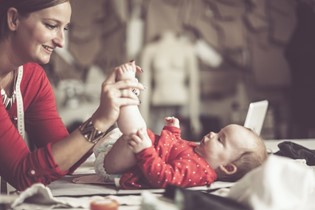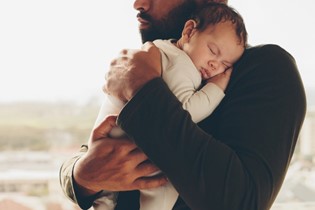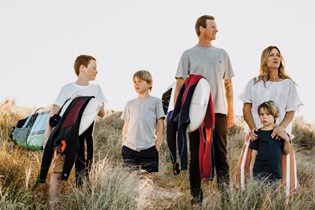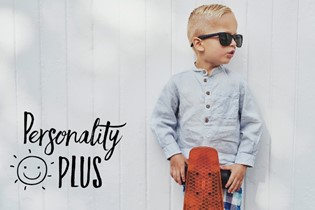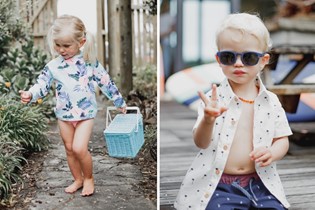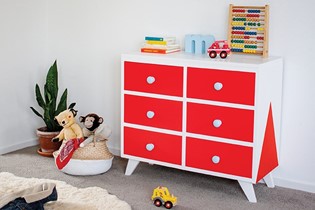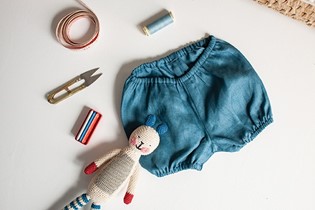Building school-ready kids
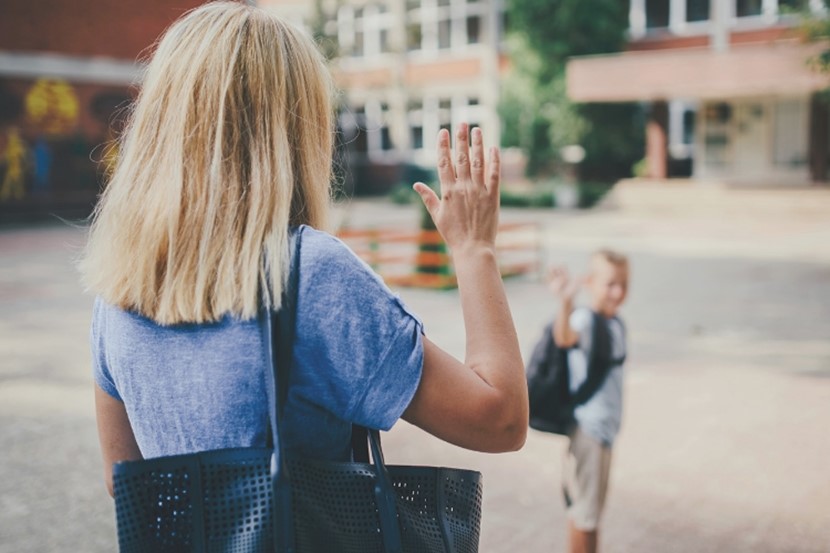
Hannah Davison talks to three experts who share practical ideas for preparing your child for a confident start at school.
Are you excited about going to school?” It’s a question we often ask. But, unless that child has an older sibling, they’ll have little idea how to answer.
“Some kids want to talk about it and some kids don’t. It can be overwhelming because everyone makes such a big deal about turning five and starting school. It can actually cause more anxiety for children” says Abby Linn, registered play therapist at Creative Coping (creativecoping.co.nz). “If your child brings up school and asks questions, that’s your opportunity to talk about it.”
READY OR NOT?
Age doesn’t determine a child’s readiness for school, so it’s helpful to remember we’re not legally obliged to start children as soon as they turn five. They can start any time between the ages of five and six. Choosing the right time is a decision belonging to the parents.
When deciding if your child is ready, there are signs you can look for, and things you can do to help them prepare. As there’s no expectation of academic ability at new entrant level, it’s the practical skills that serve them best.
“Writing and recognising their name is helpful, but not essential” says Kylee Habgood, assistant principal at Amuri Area School. “If your child turns up keen and interested, then they’re ready. They’ll pick the rest up really quickly.”
“Every child will go in with different strengths and qualities. Every child is different, but different is good! That’s how children learn from each other” says Abby Linn, who reminds us it’s natural for children to have worries about how their own abilities might compare to others. In recent times, more emphasis has been placed on wellbeing to determine if a child is ready for school. When they’re not first needing to overcome anxiety, social and academic learning may come more easily. “If the child isn’t right within themselves, any amount of learning is not going to help” says Kylee.
BUILDING 'BIG KIDS'
As parents, we can help foster a sense of wellbeing within our children by encouraging independence and confidence around their ‘big kid’ abilities. “If your child can manage those little things like putting their shoes on and getting themselves to the toilet, it goes an awfully long way” says Kylee. Rather than worrying about ABCs or 1-2-3s, our time is better spent helping our children develop more self-sufficiency around getting dressed, putting on shoes, packing their bag, being able to open everything in their lunchbox, looking after their belongings and getting themselves to the toilet. Mastering these skills really helps as they enter an environment where there’ll be an expectation to do more things for themselves. Abby also recommends letting your child lead decisions such as choosing their school bag, lunchbox, drink bottle, name labels and book covers. The more agency they feel, the more on-board they’ll become. Starting school then becomes something they feel part of, rather than something happening to them.
Nathan Wallis, Neuroscience Educator and Director of X-Factor Education, suggests in that first year, it’s more important for brain development to concentrate on making friends and building confidence. “The biggest issue is around creating predictability for the child. Eldest children have the most trouble transitioning into school because they don’t know what to expect.”
Arrange to visit the school outside of hours when the child won’t be distracted or overwhelmed. Show them where their classroom will be, the playground, where they’ll eat their lunch and how to find the toilets. As your child approaches their start date, formal school visits will be arranged. This is an opportunity for both parent and child to develop a good relationship with their teacher. “Kids can be anxious. They get to school and they’re unsure about what’s going on or how to behave” says Kylee. “It’s really important that it’s safe, warm and welcoming, and the teacher is building that relationship [with the child]. At school, we are their number one support person.”
TRANSITIONING INTO SCHOOL
Sometimes half the battle is getting out of the house in the morning. It can be a major upheaval to meet that school commitment five days a week. “Avoiding an emotional rollercoaster – for everybody – comes back to taking ownership and setting a routine” says Abby. She suggests making a visual checklist with your child for managing the mornings, using images that show getting dressed, having breakfast, packing their bag and brushing their teeth. Once you’re out the door, the next part is what some parents fear most – the drop-off.
“When a child is experiencing an unpredictable situation, their brainstem is aroused” says Nathan. In this fight-or-flight mode, it becomes difficult to take in new information. Developing good strategies for managing the transition at drop-off helps towards the learning they’ll be doing that day.
Nathan suggests that, if a child is having difficulty, there needs to be a physical transfer inside the classroom from their primary parent or caregiver relationship, to their primary teacher relationship. It’s important that the child is not left alone in an empty space which creates feelings of insecurity. If the child needs their primary parent or caregiver relationship during those early days, this should be encouraged. “It’s important to do whatever makes them feel the most secure in that environment” says Nathan. Discuss with their teacher the best strategy for managing the transition at drop-off, and agree on a plan that is consistent, predictable and supportive.
“Talk to your teacher about your child’s disposition, how they cope, what makes them anxious and things that help them settle. Knowing more about your child will help them to work out which strategy to apply. Whether it’s a distraction technique or physical comfort, it depends on the child and what they need to feel safe and okay” says Abby.
FEELING CONNECTED
If separation is an issue, Abby shares ideas for staying connected even when you can’t be together physically. You could try wearing matching bracelets, leaving notes or drawings in your child’s lunchbox, or drawing a love heart on a stone. Your child can keep their ‘smile stone’ in their pocket and give it a squeeze when they need to. They might like to bring a transitional toy or an item from home they can tell a story about in class, or you can make up a little rhyme to say if they’re having a tricky time. Figure out a coping strategy that feels right for your family to remind each person that no matter where they are, or what is happening, they are always loved and supported.
FINDING WORDS
Most of us won’t remember learning social tools that help us build relationships. Practising together at home can help when your child is looking to reach out to their peers. Try role-playing to give them words they can use to invite someone to play, sit with them at lunch or ask for help. Some problems might not be so obvious to identify. Abby suggests also looking for those nonverbal cues that could indicate something is creating anxiety, and acknowledging your child’s feelings.
“It’s about reading what your child’s not saying and acknowledging that it’s new and it can be overwhelming, then putting a plan in place so that they don’t have to feel worried” says Abby. “They might be fussing over their shoes, uniform or hair, or not wanting to get in the car. It’s not necessarily about those things, it’s about what the next step is after that.”
Afternoon tea time, when your child is home from school, is a good opportunity to discover how they’re feeling. This is an important face-to-face catch-up where they can receive your full focus.
ONGOING ENCOURAGEMENT
As your child progresses, Abby suggests celebrating the curiosity and energy they put towards their learning journey rather than worrying about results.
“It’s really important not to put in our own views and perceptions on what’s good or bad, or what’s expected, or what’s not. It’s about encouraging the learner and the trier in your child. It’s the journey that’s important to the child as opposed to the outcome” says Abby.
|
TOP TIPS FROM OUR EXPERTS Before starting ✔ Read books together daily for brain development ✔ Talk to your child about things you see and do, giving them experiences they can talk about – oral language is the foundation for reading and writing ✔ Minimise screen time ✔ Visit and research their new school ✔ Encourage self-management in the morning routine ✔ Let your child choose their own school bag, lunchbox, drink bottle, name labels and book covers ✔ Teach them words they can use to help make friends ✔ Ask the new entrant teacher for guidance on what, and how, best to teach your child if they show an early interest in letters and numbers
Settling in ✔ Make a visual checklist for the morning routine ✔ Create a strategy for managing the transition at drop-off ✔ Introduce coping strategies your child can use throughout the day, eg a ‘smile stone’, bracelets, a note in their lunchbox, or a toy they can take with them ✔ Acknowledge your child’s feelings and that you’ll help them figure it out ✔ Be patient and try to be available if your child needs to feel secure ✔ Share insights with your child’s teacher ✔ Make time for full focus at afternoon tea |
|
Hannah Davison is a Scottish-born, New Zealand-grown author of picture books, short stories for young and old, and children’s fiction; a freelance writer; journalist and blogger. She can be found at home on their family farm in North Canterbury with her husband, two children and a range of animals. Read more at hannahedavison.com. |

AS FEATURED IN ISSUE 44 OF OHbaby! MAGAZINE. CHECK OUT OTHER ARTICLES IN THIS ISSUE BELOW






